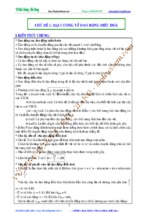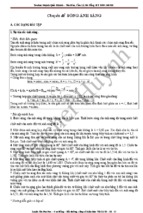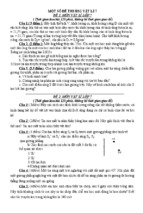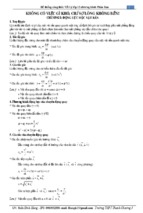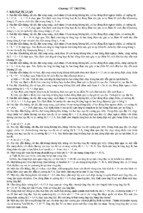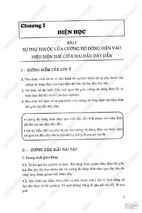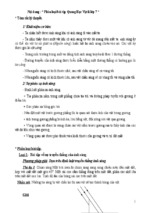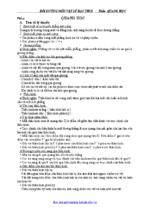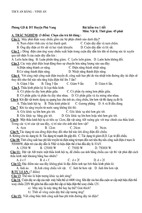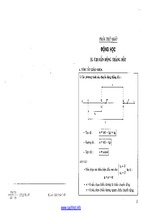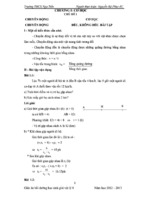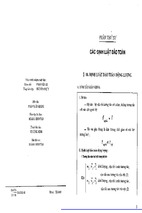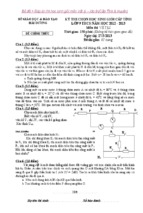Introduction to the SAT II
THE SAT II SUBJECT TESTS ARE CREATED and administered by the College Board and the Educational
Testing Service (ETS), the two organizations responsible for the dreaded SAT I (which most people call the
SAT). The SAT II Subject Tests were created to act as complements to the SAT I. Whereas the SAT I tests your
critical thinking skills by asking math and verbal questions, the SAT II Subject Tests examine your knowledge
of a particular subject, such as Physics, Writing, U.S. History, or Biology. The SAT I takes three hours; the
Subject Tests take only one hour each.
In our opinion, the SAT II Subject Tests are better tests than the SAT I because they cover a definitive topic
rather than ambiguous critical thinking skills. However, just because the SAT II Subject Tests do a better job
of testing your knowledge of a useful subject doesn’t mean they are necessarily easier or demand less
studying. A “better” test isn’t necessarily better for you in terms of how easy it will be.
The Good
Because SAT II Subject Tests cover specific topics like Physics and Biology, you can study for them
effectively. If you don’t know a topic in physics, such as how to deal with an inclined plane problem, you
can look it up and learn it. The SAT IIs are straightforward tests: if you know your stuff, you will do well
on them.
Often, the classes you’ve taken in school have already prepared you well for the SAT IIs. If you took a
course in physics and did well, you probably covered most of the topics that are tested on the SAT II
Physics Test. All you need is some refreshing.
The Bad
Because SAT II Subject Tests quiz you on specific knowledge, it is much harder to “beat” or “outsmart”
an SAT II test than it is to outsmart the SAT I. For the SAT I, you can use all sorts of tricks and strategies
to figure out an answer. There are far fewer strategies to help you on the SAT II. Don’t get us wrong:
having test-taking skills will help you on an SAT II test, but knowing the subject will help you much,
much more. In other words, to do well on the SAT II, you can’t just rely on your quick thinking and
intelligence. You need to study.
Colleges and the SAT II Subject Tests
We’re guessing you didn’t sign up to take the SAT II just for the sheer pleasure of it. You probably want to get
into college and know that the one and only reason to take this test is that colleges want or require you to do
so.
Colleges care about SAT II Subject Tests for two reasons. First, the tests demonstrates your interest,
knowledge, and skill in specific subjects. Second, because SAT II tests are standardized, they show how your
knowledge of physics (or biology or writing or U.S. history) measures up to that of high school students
nationwide. The grades you get in high school don’t offer such a measurement to colleges: some high schools
are more difficult than others, and students of equal ability might receive different grades, even in classes with
relatively similar curricula.
When it comes down to it, colleges like the SAT IIs because they make the college’s job easier. The SAT IIs
allow colleges to easily compare you to other applicants and provide you with a chance to shine. If you get a 93
in a physics class, and a student at another high school across the country gets a 91, colleges won’t necessarily
know how to compare the two grades. They don’t know whose class was harder or whose teacher was a
tougher grader. But if you get a 720 on the SAT II Physics and that other kid gets a 670, colleges will recognize
the difference in your scores.
College
Placement
Occasionally, colleges use SAT II tests to determine placement. For example, if you do very well on the SAT II
Writing, you might be exempted from a basic expository writing class. It’s worth finding out whether the
colleges you’re applying to use the SAT II tests for this purpose.
Scoring the SAT II Subject Tests
There are three different versions of your SAT II score. The “raw score” is a simple score of how you did on the
test, like the grade you might receive on a normal test in school. The “percentile score” compares your raw
score to all the other raw scores in the country, letting you know how you did on the test in relation to your
peers. The “scaled score,” which ranges from 200–800, compares your score to the scores received by all
students who have ever taken that particular SAT II.
The Raw Score
You will never know your SAT II raw score because it is not included in the score report. But you should
understand how the raw score is calculated, because this knowledge can affect your strategy for approaching
the test.
Your raw score on the SAT II Physics Test is based on a few simple rules:
You earn 1 point for each correct answer.
You lose 1 / 4 of a point for each incorrect answer.
You receive zero points for each question left blank.
Calculating the raw score is easy. Count the number of questions you answered correctly and the number of
questions you answered incorrectly. Then multiply the number of wrong answers by 1 /4 , and subtract this
value from the number of right answers:
raw score
# of correct answers
1
/4
# of wrong answers
Suppose, for example, that of the 75 questions on the test, you answered 52 questions correctly, 18 questions
incorrectly, and left five blank. Your raw score would be calculated as follows:
The raw score is rounded to the nearest whole number. In this case, your raw score would be 48.
The Percentile Score
Your percentile is based on the percentage of the total test takers who received a lower raw score than you did.
Let’s say, for example, your friend Methuselah took the SAT II Physics Test and got a score that placed him in
the 37th percentile. That means he scored better on that test than did 36% of the other students who took the
same test. It also means that 63% of the students taking that test scored as well as or better than he did.
The Scaled Score
ETS takes your raw score and uses a formula to turn it into the scaled score of 200–800 that you’ve probably
heard so much about.
The curve to convert raw scores to scaled scores varies from test to test. For example, a raw score of 33 on the
Math IC might scale to a 600, while the same raw score on the Math IIC might scale to a 700. In fact, the
scaled score can even vary between different editions of the same test. A raw score of 33 on the February 2004
Math IIC might scale to a 710, while a 33 in June 2004 might scale to a 690. These differences in scaled scores
exist to accomodate the varying levels of difficulty and student performance from year to year.
SAT II Physics Score Conversion Table
800
75
680
43
480
11
800
74
670
42
480
10
800
73
670
41
470
9
800
72
660
40
470
8
800
71
650
39
460
7
800
70
640
38
450
6
800
69
640
37
450
5
800
68
630
36
440
4
800
67
620
35
440
3
800
66
610
34
430
2
790
65
610
33
430
1
790
64
600
32
420
0
790
63
600
31
410
–1
780
62
590
30
410
–2
780
61
590
29
400
–3
780
60
580
28
400
–4
770
59
580
27
390
–5
770
58
570
26
380
–6
760
57
560
25
380
–7
760
56
560
24
370
–8
750
55
550
23
360
–9
740
54
540
22
360
–10
740
53
540
21
360
–11
730
52
530
20
350
–12
720
51
530
19
350
–13
720
50
520
18
340
–14
710
49
520
17
340
–15
700
48
510
16
330
–16
690
47
510
15
320
–17
690
46
500
14
310
–18
680
45
490
13
310
–19
680
44
490
12
Scaled
Score Average Raw Score Scaled
Score
Average Raw Score Scaled
Score
Average Raw Score
Which SAT II Subject Tests to Take
There are three types of SAT II tests: those you must take, those you should take, and those you shouldn’t
take:
The SAT II tests you must take are those that are required by the colleges in which you are interested.
The SAT II tests you should take are those that aren’t required, but that you’ll do well on, thereby
impressing the colleges looking at your application.
The SAT II tests you shouldn’t take are those that aren’t required and that cover a subject about which
you don’t feel confident.
Determining Which SAT II Tests Are Required
You’ll need to do a bit of research to find out if the colleges you’re applying to require that you take a
particular SAT II test. Call the schools you’re interested in, look at their websites, or talk to your guidance
counselor. Often, colleges request that you take the following SAT II tests:
SAT II Writing Test
One of the two SAT II Math Tests (either Math IC or Math IIC)
Another SAT II in a subject of your choice
Not all colleges follow these guidelines, however, so you should take the time to verify which tests you need to
take in order to apply to the colleges that interest you.
Colleges do not usually require you to take the SAT II Physics, but taking it and doing well can show a liberal
arts college that you are well rounded, or show a technically oriented college that you are serious about
science. In general, it is a good idea to take one science-related SAT II, whether Biology, Chemistry, or
Physics.
Determining Which Additional SAT II to Take
There are two rules of thumb for deciding which additional test to take beyond the Writing and Math tests:
1. Go with what you know. If history is your field, a strong score on the SAT II U.S. History will impress
admissions officers far more than a bold but mediocre effort on the SAT II Physics .
2. Try to show breadth. Scoring well on Math, Physics, and Chemistry tests will not be as impressive as
good scores in Math, Writing, U.S. History, and Physics.
Of course, you also have to know what is considered a good score on that SAT II test, and whether you can get
that score (or higher).
Below, we have included a list of the most popular SAT II tests and the average scaled score on each. For most
schools, a score that is 50 points above this average will significantly boost your college application. If you are
applying to an elite school, you may need to aim closer to 100 points above the average. It’s a good idea to call
the schools you’re interested in, check their websites, or talk to a guidance counselor for a more precise idea of
what score you should be shooting for.
Writing
590-–600
Literature
590–600
U.S. History
580–590
World History
570–580
Math IC
580–590
Math IIC
655–665
Biology
590–600
Chemistry
605–615
Physics
635–645
TEST
AVERAGE
SCORE
It’s a good idea to take three tests that cover a range of subjects, such as one math SAT II, one humanities SAT
II (History or Writing), and one science SAT II. However, taking more than three SAT II tests is probably not
necessary.
When to Take an SAT II Subject Test
The best time to take an SAT II Subject Test is, of course, right after you’ve finished a yearlong class in that
subject. If, for example, you take a physics class in tenth grade, then you should take SAT II Physics near the
end of that year, when all the material is still fresh in your mind. (This rule does not apply for the Writing,
Literature, and Foreign Language SAT II tests: it’s best to take those after you’ve had as much study in the
area as possible.)
ETS usually sets testing dates for SAT II Subject Tests in October, November, December, January, May, and
June. However, not every subject test is administered in each of these months. To check when the test you
want to take is being offered, visit the College Board website at www.collegeboard.com or do some research in
your school’s guidance office.
Unless the colleges you’re applying to use the SAT II for placement purposes, there is no point in taking SAT II
tests after November of your senior year, since you’ll get your scores back from ETS after the college
application deadlines have passed.
Registering for SAT II Tests
To register for the SAT II tests of your choice, you have to fill out some forms and pay a registration fee. We
know—it’s ridiculous that you have to pay for a test that colleges require you to take in order to make their
jobs easier, but, sadly, there isn’t anything we, or you, can do about it. (It’s acceptable here to grumble about
the unfairness of the world. )
After grumbling, however, you still have to register. There are two ways to go about it: online or by mail. To
register online, go to www.collegeboard.com and follow the instructions listed. To register by mail, fill out and
send in the forms enclosed in the Registration Bulletin, which should be available in your high school’s
guidance office. You can also request a copy of the Bulletin by calling the College Board at
7600
, or writing to:
(609) 771-
College Board SAT Program
P.O. Box 6200
Princeton, NJ 08541-6200
You can register to take up to three SAT II tests on any given testing day. Unfortunately, even if you decide to
take three tests in one day, you’ll have to pay a separate registration fee for each test you take.
Introduction to SAT II Physics
THE BEST WAY TO DO WELL ON SAT II Physics is to be really good at physics. For that, there is no
substitute. But the physics whiz who spends the week before SAT II Physics cramming on Lagrangian
mechanics and Dirac notation probably won’t fare any better than the average student who reviews this book
carefully. Why? Because SAT II Physics Tests (and first-year university courses) do not cover Lagrangian
mechanics or Dirac notation. Take this moment to sigh with relief.
This chapter will tell you precisely what SAT II Physics will test you on, how the test breaks down, and what
format the questions will take. You should read this information carefully and base your study plan around it.
There’s no use spending hours on end studying for stuff that’s not relevant to the test. Knowing nothing about
electromagnetic induction will hurt you on the test, but nowhere near as much as knowing nothing about
optics will.
Content of SAT II Physics
Math and physics go hand in hand, right? You might be surprised, then, to learn that you aren’t allowed to use
a calculator on SAT II Physics. The math required of you never goes beyond simple arithmetic and
manipulation of equations. You have, on average, 48 seconds to answer each question, and the people at ETS
realize that isn’t enough time to delve into problems involving simultaneous equations or complex
trigonometry. They’re more interested in testing your grasp of the basic concepts of physics. If you’ve grasped
these concepts, your weakness in math isn’t going to hurt you.
ETS breaks down the concepts you need to know for the test into six categories:
Mechanics
34–38%
Electricity and Magnetism
22–26%
Waves
15–19%
Heat, Kinetic Theory, and Thermodynamics
8–12%
Modern Physics
8–12%
Miscellaneous
2–4%
Topic
Percentage of the Test
While these categories are helpful, they are also very broad. You may be a whiz with waves but a loser with
lenses, and want to know how much of the waves portion of the test will be devoted to optics. To help you out,
we’ve broken the test down even further so that you’ll know exactly where to expect to feel the squeeze. (These
figures are only approximations, and may vary from test to test.)
Vectors
2%
1–2
Kinematics
6%
4–5
Dynamics
10%
7–8
Work, Energy, and Power
6%
4–5
Special Problems in Mechanics
5%
3–4
Linear Momentum
2%
1–2
Rotational Motion
1%
0–1
Circular Motion and Gravitation
4%
2–4
Heat and Temperature
4%
2–4
Kinetic Theory and Ideal Gas Laws
2–3%
1–2
Laws of Thermodynamics
1%
0–2
Heat Engines
2–3%
1–2
Electric Fields, Forces, Potential
10%
7–8
Magnetic Fields and Forces
6%
4–5
Electromagnetic Induction
1%
1
Circuits and Circuit Elements
6%
4–5
Waves
10%
7–8
Optics
7%
5–6
Special Relativity
1–2%
1–2
Atomic Models
3%
2–3
Quantum Physics
2%
1–2
Nuclear Physics
3%
2–3
Graph Analysis
1–2%
0–2
Equation Manipulation
0.5–1%
0–1
Significant Digits and Lab Skills
0.5–1%
0–1
Topic
% of the Test
Number
of
Questions
Mechanics
Thermal Physics
Electricity & Magnetism
Waves
3 4 – 38 %
8–12%
2 2 – 26 %
1 5 – 19 %
25–29
6–10
16–20
11–15
Modern Physics
Miscellaneous
8–12%
2–4%
6–9
1–3
The chapters of this book are organized according to these categories. If a physics topic is not in this book, you
don’t need to know it. Here’s some other helpful information:
You need to know: the formulas expressing physical relationships (such as F = ma ), how to manipulate
equations, how to read a graph
You don’t need to know: trig identities, calculus, three-dimensional vectors and graphs, physical constants
(such as G = 6.67
1 0–11 N m2 / kg2 )
Format of SAT II Physics
SAT II Physics is a one-hour-long test composed of 75 questions and divided into two parts. You can answer
questions in any order you like, though you’re less likely to accidentally leave a question out if you answer
them in the order in which they appear. Part A—classification questions—takes up the first 12 or 13 questions
of the test, while Part B—five-choice completion questions—takes up the remaining 62 or 63 questions.
Part A: Classification Questions
Classification questions are the reverse of normal multiple-choice question: they give you the answers first
and the questions second. You’ll be presented with five possible answer choices, and then a string of two to
four questions to which those answer choices apply. The answer choices are usually either graphs or the
names of five related laws or concepts. Because they allow for several questions on the same topic,
classification questions will ask you to exhibit a fuller understanding of the topic at hand.
The level of difficulty within any set of questions is generally pretty random: you can’t expect the first question
in a set to be easier than the last. However, each set of classification questions is generally a bit harder than
the one that came before. You should expect questions 11–13 to be harder than questions 1–4.
Classification Question Example
Directions: Each set of lettered choices below refers to the numbered questions immediately following it. Select the
one lettered choice that best answers each question and then blacken the corresponding space on the answer sheet. A
choice may be used once, more than once, or not at all in each set.
Questions
1–3
A boy throws a ball straight up in the air and then catches it again.
1.
Which of the above graphs best represents the ball’s position with respect to time?
2.
Which of the above graphs best represents the ball’s velocity with respect to time?
3.
Which of the above graphs best represents the ball’s acceleration with respect to time?
Explanation
You can usually answer classification questions a bit more quickly than the standard five-choice completion
questions, since you only need to review one set of answer choices to answer a series of questions.
The answer to question 1 is B . The ball’s position with respect to time can be expressed by the equation y =
– 1 /2 g t 2 , where g is the downward, acceleration due to gravity. As we can see, the graph of y against t is an
upside-down parabola. In more intuitive terms, we know that, over time, a ball thrown in the air will rise, slow
down, stop, and then descend.
The answer to question 2 is E . The acceleration due to gravity means that the velocity of the ball will decrease
at a steady rate. On the downward half of the ball’s trajectory, the velocity will be negative, so E , and not A , is
the correct graph.
The answer to question 3 is D . The acceleration due to gravity is constant throughout the ball’s trajectory, and
since it is in a downward direction, its value is negative.
Don’t worry if the question confused you and the explanations didn’t help. This material and more will be
covered in Chapter 2: Kinematics. This was just an exercise to show you how a classification question is
formatted.
Part B: Five-Choice Completion Questions
These are the multiple-choice questions we all know and love, and the lifeblood of any multiple-choice exam.
You know the drill: they ask a question, give you five possible answer choices, and you pick the best one. Got
it? Good. An example appears below.
While you’ll often find two or three questions in a row that deal with the same topic in physics, there is no
pattern. You might find a question on modern physics followed by a question on dynamics followed by a
question on optics. However, there is a general tendency for the questions to become more difficult as you
progress.
Five-Choice Completion Question Example
Directions: Each of the questions of incomplete statements below is followed by five suggested answers or
completions. Select the one that is best in each case and then fill in the corresponding oval on the answer sheet.
1.
A gas in a closed container is steadily heated over a period of time. Which of the following statements is true of this
process?
(A)
The average kinetic energy of the gas molecules decreases
(B)
The mass of the container increases
(C)
The pressure exerted by the gas on the walls of the container increases
(D)
The gas changes phase into a liquid
(E)
The specific heat of the gas decreases
Explanation
The answer to this question is C . The key lies in remembering the ideal gas law: PV = nRT . According to this
formula, an increase in temperature is accompanied by an increase in pressure. A is wrong, since the average
kinetic energy of gas molecules corresponds to their temperature: if the temperature increases, so does the
average kinetic energy of the molecules. B is wrong because we’re dealing with a closed container: the mass
cannot either increase or decrease. D is wrong because a gas must be cooled, not heated, to change phase into
a liquid. Finally, E is wrong because the specific heat of any substance is a constant, and not subject to change.
We’ll touch on all this and more in Chapter 9: Thermal Physics.
- Xem thêm -

